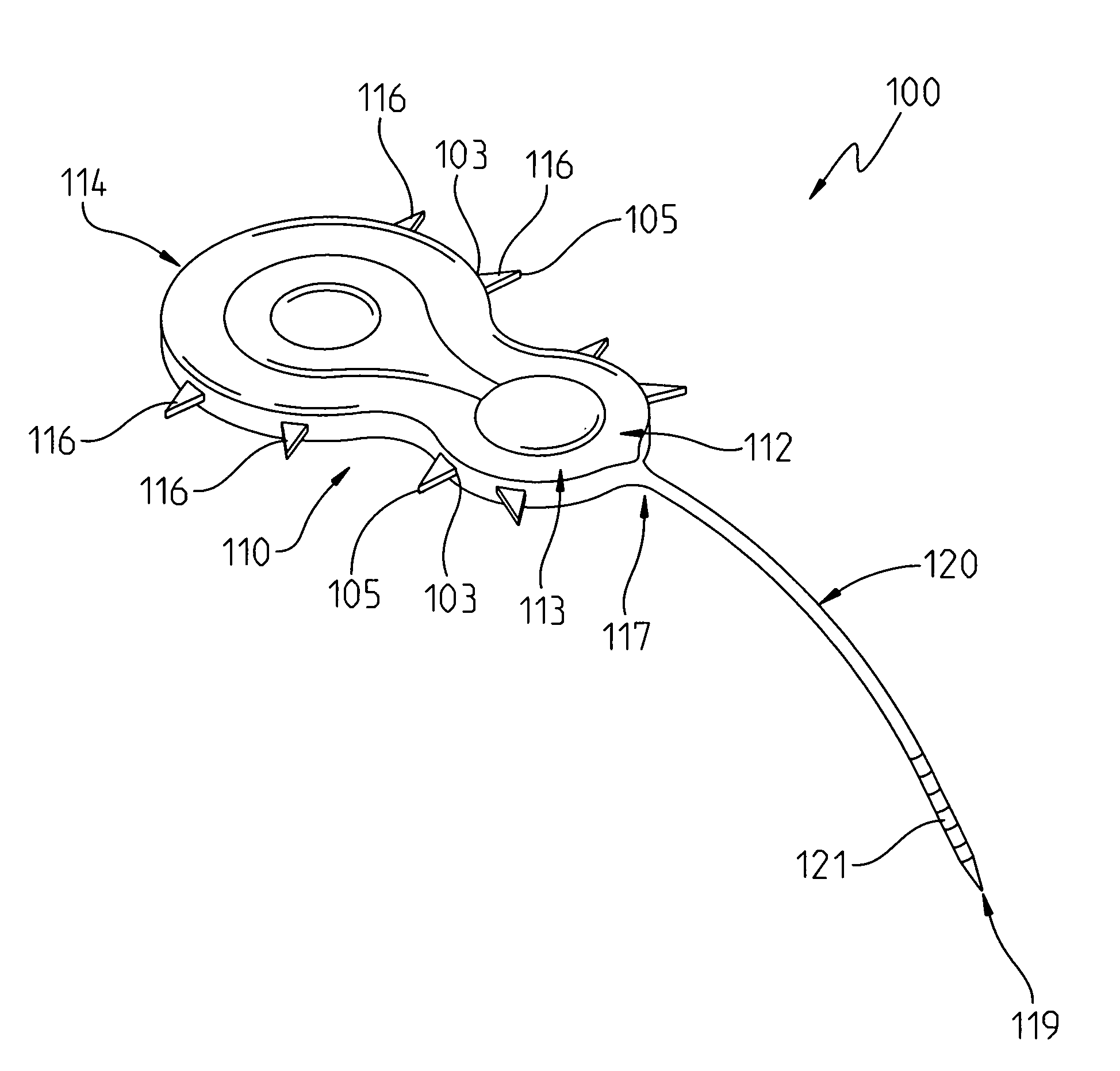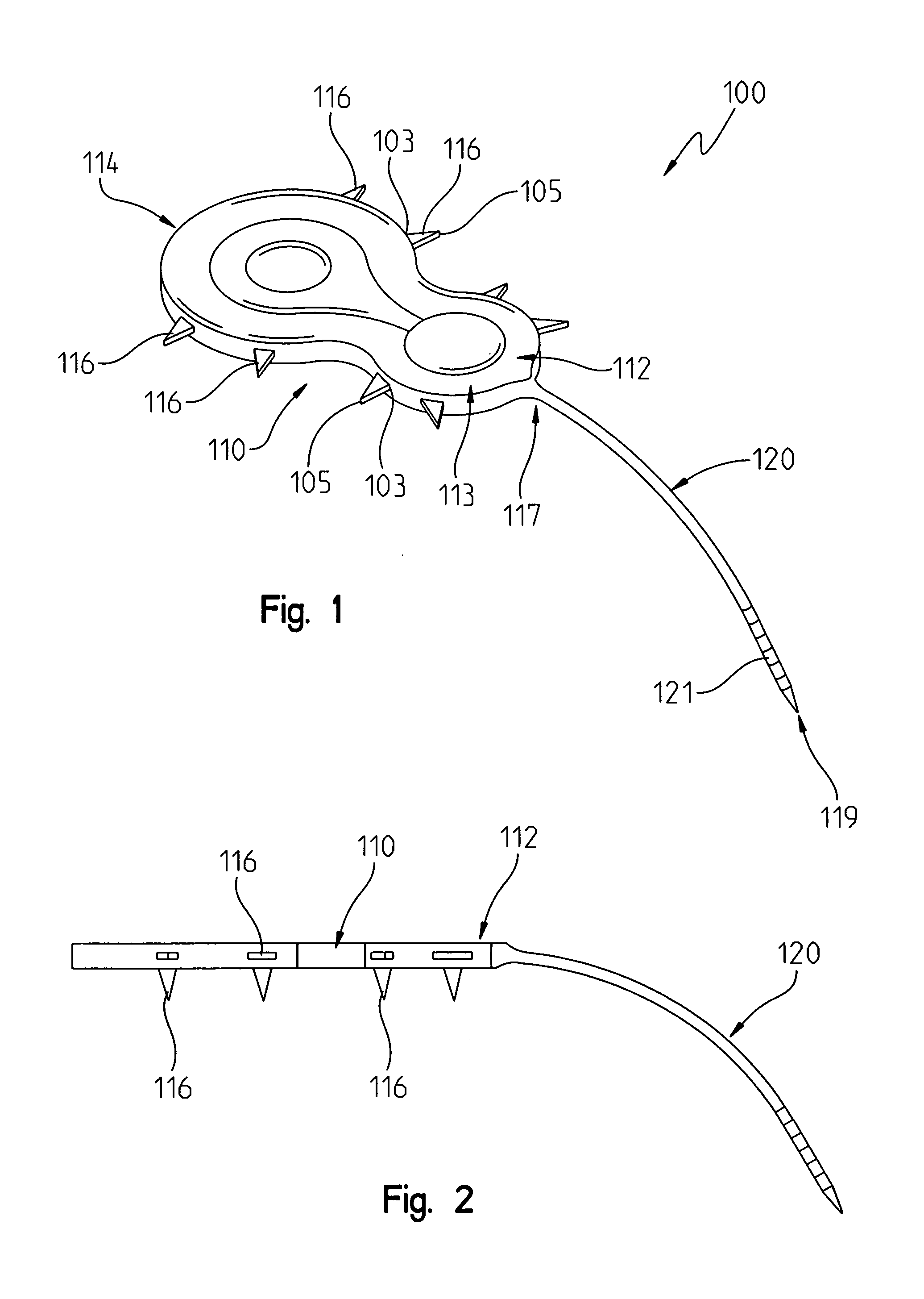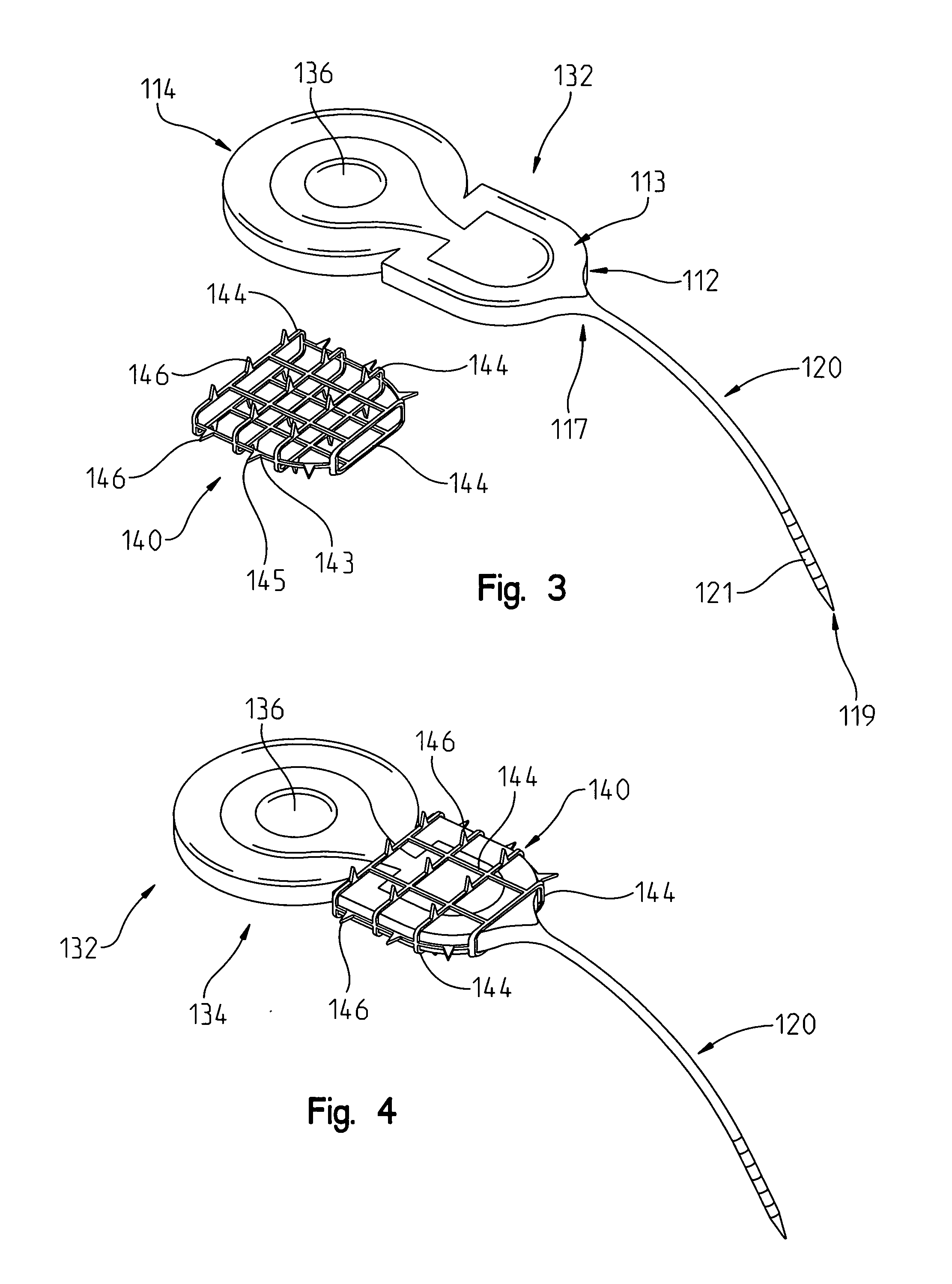Cochlear implant stabilization and positioning device
a cochlear implant and positioning technology, applied in the field of cochlear implant hearing aid devices, can solve the problems of affecting the efficiency of electrical signal transfer between the electrode and the nerve to be stimulated, the cochleostomy site not sealing well, and the outcome of unwanted electrode movement, so as to reduce the diameter of the interior passageway and improve the stabilization
- Summary
- Abstract
- Description
- Claims
- Application Information
AI Technical Summary
Benefits of technology
Problems solved by technology
Method used
Image
Examples
first embodiment
[0047]The first embodiment implant system 100 is shown in FIGS. 1 and 2 as comprising a cochlear implant receiver-stimulator 100. The receiver stimulator 100 includes a body portion 112. The body portion 112 that includes a casing 113 for internally containing the electronic circuitry necessary for the device 100 to operate. The receiver stimulator 110 also includes a stimulation delivery electrode array 120 that is long and thin and has an appearance similar to a tail. The electrode array includes a proximal end 117 attached to the body portion and a distal end portion 119 that is sized and configured for insertion through a cochleostomy opening into the interior of a cochlea.
[0048]A plurality of signal transmitting studs 121 are disposed at the distal end portion 119 for transmitting electrical segments to closely positioned neural receptors for the Organ of Corti. Examples of such stimulation delivery electrode arrays can be found in the Applicants' above referenced patents and a...
second embodiment
[0050]the stimulator-receiver 132 body 112 position maintaining device includes a cage-like wrap-around 140 having a hollow interior 141 for receiving the body 112 of implant 121. The cage 140 may be a separate device from the cochlear implant body 112 (FIGS. 3 and 4). The cage 140 may be provided to be separate from body 112, or cage 140 may be coupled to the body 112 of implant receiver-stimulator 132 at the factory and come packaged as an assembled, one piece unit (FIG. 4). The cage 140 may be constructed from any of metal, plastic, composite, or an absorbable material.
[0051]Turning now to FIGS. 3 and 4, the assembly 121 includes a cochlear implant receiver-stimulator 132 that includes a body portion 112, including a casing 113 and a side edge 114, and an array of stimulation delivery electrodes 120. A signal providing electrode 120 is provided for delivering a signal to the cochlear implant receiver-stimulator 132 from the signal generating sources such as the speech processor (...
PUM
 Login to View More
Login to View More Abstract
Description
Claims
Application Information
 Login to View More
Login to View More - R&D
- Intellectual Property
- Life Sciences
- Materials
- Tech Scout
- Unparalleled Data Quality
- Higher Quality Content
- 60% Fewer Hallucinations
Browse by: Latest US Patents, China's latest patents, Technical Efficacy Thesaurus, Application Domain, Technology Topic, Popular Technical Reports.
© 2025 PatSnap. All rights reserved.Legal|Privacy policy|Modern Slavery Act Transparency Statement|Sitemap|About US| Contact US: help@patsnap.com



